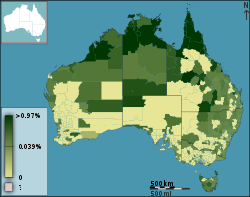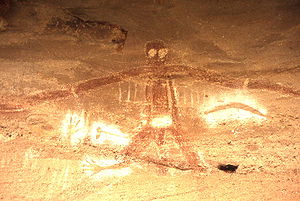IND/Relationships to Country
Dreaming stories are strongly connected with place. All life is interconnected with country; thus people are connected to the land, other people and all living things through the land.
Elder of the Gagudgu Nation of Kakadu in the west of the Northern Territory, speaks of his relationship to country:
| “ | Earth… Like your father or brother or mother, because you were born from earth. You got to come back to earth. When you dead… you’ll come back to earth. Maybe little while yet… then you’ll come to earth. That’s your bone, your blood. It’s in this earth, same as for tree. I feel it with my body, with my blood. Feeling all these trees, all this country. When this wind blow you can feel it. Same for country… You can feel it. You can look, but feeling… that make you. |
” |
| —Bill Neidjie (1985, p. 51) | ||
The relationship to country and associated rights, obligations and duties with a particular site is inherited from a mother, father and/or conception and birth sites. The duties may include learning about a specific site and passing the knowledge on when it is time, or ensuring ceremonies are performed. A connection to specific areas determines obligations for caring for the land and everything on the land, including the people.
In defining the sacred nature of ‘country’, archaeologist and Aboriginal chaplain, states:
| “ | The land is a sacred place, the locus of creative acts of the Dreaming, which persist into the present. It is still peopled by ancestral spirits who gave form to the landscape and its denizens and now rest at special places, the life centres. There, though dormant, they are yet conscious and active, releasing the spirit children and life force of their totem. It is not simply a landscape studded with discreet locations known as sacred sites. The whole is sacred with varying degrees of sacredness throughout, as if superimposed on the physical contours of the land; those who know can perceive spiritual contours (like our weather maps). Those who know, through totemic affiliation and initiation, have a mental map of their country, marking out where events of the Dreaming took place, criss-crossed by lines where the totemic ancestors travelled the sacred tracks between camps and places of significant happening, and highlighting their resting place and life centres. | ” |
| —Father Eugene Stockton (1995, p. 56) | ||

